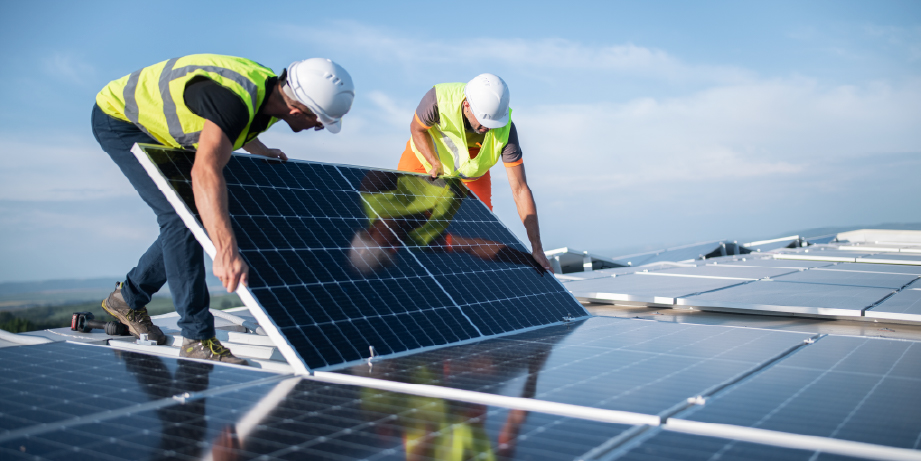Avoiding hidden risks when planning sustainable construction projects
The surprising risks emerging from sustainable construction trends, and how you can keep your clients resilient as they advance their net-zero agendas

Sustainable building techniques are becoming increasingly popular for construction companies and property owners alike. Our clients are exploring many sustainability options—ranging from the solar panel installations to designing fully carbon-neutral buildings from the ground up.
As part of our commitment to protecting clients and ensuring their businesses are resilient against emerging risks, FM works tirelessly to test these new construction materials, techniques, and products at our 1,600-acre research campus.
To help you do the same, this article highlights some of our most recent (and surprising) findings about common sustainability solutions they may be considering. It also outlines how you can leverage our expertise to ensure their sustainability projects are resilient by design.
Ensuring sustainability projects are resilient

FM conducts thousands of controlled tests every year to understand the risks associated with different construction materials and assess their implications for the resilience of our clients’ businesses.
Through this process, we have found several areas where emerging construction trends may expose your clients to new risks. These include:
- Building integrated photovoltaics (BIPV): Solar photovoltaic materials that are integrated into building components, such as roofs or facades, to generate electricity.
- On-site battery storage: Batteries required for the storage of electricity generated on site.
- General construction materials: New building materials being deployed for a variety of purposes, including cladding, insulation, and façade construction.
While many of the products in these categories are safe and resilient against risks such as fire, others are not. In fact, some contain high concentrations of plastic or other materials that cause them to burn in potentially catastrophic ways.
That’s why it’s so important for your clients to reach out to our team when they are planning any construction project. We can help to ensure that they use FM Approved materials and avoid anything that’s a known risk.
When to talk to our resilience experts

When clients use products that are not FM Approved, we first try to use existing research and knowledge to provide engineering judgements that minimize risk. If our existing research isn’t sufficient for proper guidance with a specific client, we have a process in place for running targeted tests to better assess the risk.
In one such recent example, a client was planning to install a large amount of a unique BIPV product on the outside of their building; which naturally changes the potential combustible load of the structure.
We have been testing various BIPVs for several years, but we had yet to assess the combustibility of this specific and unique type of BIPV. Working with the client, we decided to schedule a test to measure its flammability. The controlled burn reached a peak heat release rate (HRR) of over 12,000 kilowatts—more than 14 times the 830 kilowatts “pass mark” for this test. This HRR exceeds even that of the materials involved in the Grenfell Tower fire.
As a result, we have been able to partner with the client to explore options for mitigating this risk when the solution is deployed. Testing like this also expands our understanding and guidance for future applications of similar BIPV products, and our Approvals catalog.
The above is just one example of how we take a partnership-based approach to minimizing risks our clients face. Before any project begins, we can help them to identify risks they should be aware of. We can then discuss what construction would be appropriate for risk mitigation and review the project plans to ensure that they are resilient by design.
If you have a client you think could benefit from our expertise in sustainable construction techniques, we’d love to hear from you. Submit a new business enquiry here and we’ll be in touch ASAP.
This is part of a series of articles FM is producing to help brokers understand the value we can provide to their commercial property insurance clients. Look out for the next post in this series for more valuable insights.
